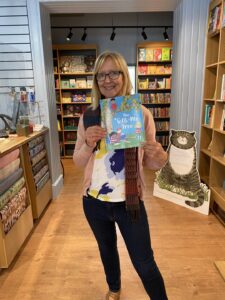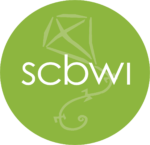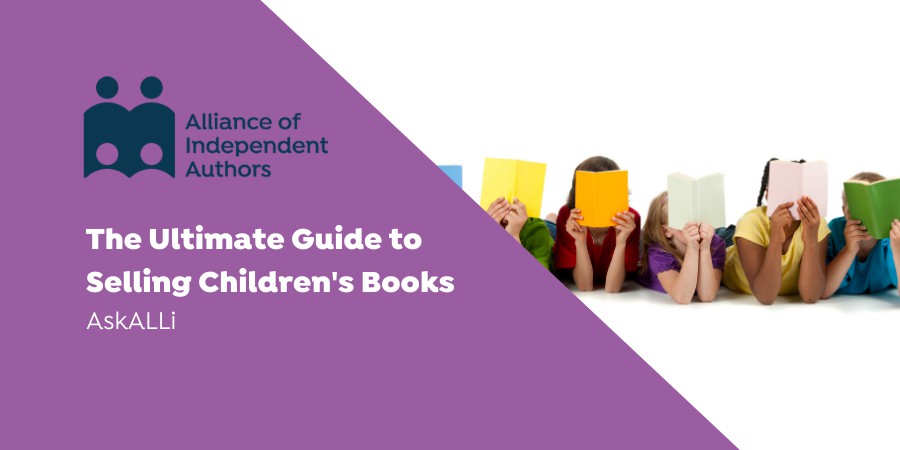Marketing books is hard enough. But what happens when your readers aren't the people paying for the books? That's the problem children's authors face. Alliance of Independent Authors members, Karen Inglis and Kate Woodard discuss selling children's books and the methods that have worked for them.
How to Sell Children's Books
Karen Inglis writes picture books, chapter books and short middle grade novels for ages 3-11. Her time travel adventure for ages 8-11 The Secret Lake is an Amazon bestseller in the UK, US and Canada and has sold over 250,000 copies in print and is in translation in eight countries. Karen has presented on children’s self-publishing around the UK and is Children’s Advisor for ALLi. Find out more about Karen on her website, Twitter. The below excerpt has been extracted and edited from Karen's book on children's book marketing. The updated edition of her popular non-fiction title How to Self-publish and Market a Children’s Book (under ‘Karen P Inglis') is due out in April.

Karen Inglis, children's author and ALLi Advisor on self-publishing books for children
My top piece of advice for marketing your children’s book is to start locally and build up your brand – and your confidence – from there. Thereafter, each time you release a new title be sure to implement this local strategy alongside wider ones – your local brand offers countless photo and content opportunities for wider social media marketing use.
Of course, during the restrictions we have all faced during Lockdown you’ll need to adapt some of the strategies below by making contact by email, or via snail mail or hand delivered mail where libraries and bookshops are operating click and collect.
Approaching local libraries
One of the first things I recommend is to approach your local library to see if they run story time sessions for children and offer to host a free event there. This is a great way to ‘test the water’ with live events and, since you won’t be charging, it won’t feel pressurised. Bear in mind that they may need a couple of months’ notice to set this up, so plant the idea early on when you meet them and go from there.
My first ever event was at our library in Barnes (the London ‘village’ where I live) and I was terrified that either no one or hordes of people would turn up! In fact it worked out perfectly. It ended up being me, my younger sister (taking photos from the back), seven children, around seven adults and a few of the library staff. The librarian even put up flags and provided tea, orange juice and biscuits! You could offer to bring cake if it’s allowed…
To support the event I created A4 and A5 flyers that I put up at the library and shared with local schools. This is easy to do using the website Canva.com and a colour printer. After the event I had photos taken from the back that I was able to share on my blog and twitter account. These days I’d also be sharing that photo on my Facebook and Instagram account pages, and adding suitable hashtags, to try to capture the attention of wider audiences.
Approaching Local Bookshops
Many local bookshops are open to supporting local authors if the quality of the book on offer is of a professional level and is a good fit. While they will be able to order your book online via the Ingram feed, most will prefer to take a small amount of stock on consignment (sale or return) to see how sales go.
If your nearest bookshop is a few miles away I’d recommend visiting in person ahead of time to get a feel for the shop – and perhaps buy a children’s (or other) book and chat with the staff to find out who looks after the buying side. Take along a copy of your book and a Title Information Sheet designed using Canva and including a link to your website. However, don’t necessarily plan to use these right away. If the shop is busy the last thing staff will want is an unplanned sales pitch form an author they’ve never heard of!
If the buyer isn’t there, ask when the quietest time might be to pop back for a chat. At this point you could mention your book and leave your Title Information Sheet. If the buyer is there, play it by ear. If it’s busy you could leave the information sheet and/or a copy of the book and offer to drop back at a later date.
Title Information Sheet
This is an A4 sheet, or similar size, designed to introduce and ‘sell’ your book to book buyers. The key components of your Title Information Sheet should be:
- Book cover image
- Other images from inside the book (optional, if room)
- ISBN and page count
- Publisher name and publication date
- RRP
- Target age range and topic/genre
- Synopsis/blurb
- Any testimonials
- Author details
- Contact details: website, email, phone
Then one or both of the following:
- Available locally on consignment – terms 40% (or whatever you decide)
- Available to order from UK [other country] wholesalers*
(*on the basis that wholesalers can order from Ingram Spark)
You’ll find an example information sheet in Karen's book or by searching online.
Supporting your bookshop with local marketing – checklist
If the bookshop agrees to take your book, go out of your way to make sales a success:
- Offer to host a story time and signing session if they have a suitable space.
- Support them by putting up flyers locally to let parents/children know that signed copies of your book are available at the shop. I did this when first starting out, making use of notice boards in coffee shops and local newsagents in areas popular with young families – use Canva for design.
- Offer to provide a ‘shelf talker’ about your book – these are the mini book blurb/review labels encased in plastic that you see hanging off the shelf in many bookshops. I’ve done this with all of my books locally, and with Waterstones in the early days. Check the dimensions then create using Canva.
- Go out of your way to mention that signed copies of your book are available at XYZ bookshop in any local press releases/articles or other marketing material you produce – including the ‘Where to buy my books’ page on your author website.
- Offer to come in and sign books for personalised orders –provide a flyer for their till that promotes this offer, and spread the word via your social media accounts.
- Offer to work with the bookshop on local school events – while you would charge a fee to the school for your time, the book sales could be organised and pass through the bookshop. If there are lots of schools within reach, this strategy could work alongside the one below.
Contacting local schools
Local schools offer the perfect opportunity to connect with young readers, sell your books and start to raise the profile of your ‘author brand’ through word of mouth. That’s the good news. The less good news is that you must be prepared to put in a lot of hard work if you want to get a foot (or should that be book?!) inside their doors. They are incredibly busy places and, unless you strike lucky, it can take a lot of time to get a meaningful response about a potential visit. Also, many will have authors booked months ahead of time and – what with school trips, exams, school inspections, sports days and other festivities – organising a visit from an unknown author isn’t likely to be a top priority for them.
I only say this to manage expectations – so don’t give up. If you plan ahead and are professional and methodical in your approach, you will get there. I can’t tell you how many hours I spent in the early days getting the correct contact names, tailoring emails and following up when I didn’t hear back only to be told the teacher wasn’t available or that they’d get back to me (but they didn’t), or to discover the person I had been told to contact had left. It can be very disheartening, but what I’ve come to realise over the years is that the school and the staff who you will come into contact with are just busy! As a result, emails can be overlooked or forgotten about. Schools that I was convinced were actively avoiding me turned out to be delightful when I finally visited them – often a year or two on from when I’d first contacted them.
To this day there are schools close to where I live that I’ve not managed to get into, despite several rounds of conversations and emails. I no longer take this personally. I put it down to their being super-busy – or simply booked up with more well-known authors. But I will try them again at some stage.
Schools close to where you grew up
If it’s feasible logistically, why not also contact the school you went to as a child? You are likely to find it easier to book a visit here than at many other schools. When I contacted the primary school I went to they were thrilled, and I spent a day seeing classes with my first three books. Next on my to-do list is to try to arrange visits to others in the area – this is feasible as my relatives still live there, which means I can stay overnight and so avoid a potential cost for the school.
Contacting schools – checklist
- Get the name of the literacy coordinator/school librarian from the school’s website or via their office.
- Tailor each email, referring to the school by name and to the pupils by gender if the context is right – for example, if your book is loved by girls and you’re targeting an all-girls’ school you might mention this.
- Mention any local connections – be that around the story, and/or local bookshops that stock your book, or the fact that you were a pupil at the school.
- Include your book cover thumbnail(s) in the body of your email or at sign-off – to make the message stand out more.
- Briefly outline the age groups your books are suitable for and the suggested format of your visit, ie readings with Q&A and/or workshop.
- Attach a ‘Name of author – Books Overview’ PDF with a full blurb of each book. Keep to one page per book and try to make the layout engaging. Again, include thumbnails, a couple of interior illustrations if relevant, age range and perhaps a notable review or testimonial. (If you only have one book then call the document ‘Name of author – Book Title – overview’ instead.)
- Attach a separate document entitled ‘Visit Format’ describing how you will run your sessions and session length – or include in the books overview PDF if you have room. (I talk more about visit format below.)
- Leave any mention of fees to one side until you have spoken with your contact – unless you’re able to offer a visit for free (on which more below).
Over time you’ll be able to update these PDFs, as you sell more books and get more reviews. (For example, The Secret Lake was considered for adaptation by Children’s BBC TV a few years ago, so I now include that in a section I call ‘Interesting to know’.)
Local press, magazines or community websites
Local newspapers, magazines and community websites are always on the lookout for timely and engaging stories, so don’t be shy if you think you can find an angle to promote your book. You have nothing to lose aside from the time to look up the contact and draft your press release. If it comes to nothing you’ve at least had practice at press release writing and made contacts that might be useful in the future.
 Include an engaging image alongside your own headshot with a short bio. Here’s me promoting my most recent title ‘The Tell-Me Tree’ (photo right) in the summer of 2020 – a short article appeared in our local village magazine that went out to several thousand households. Of course, be sure to mention that the book is available to order from the local bookshop as well as online.
Include an engaging image alongside your own headshot with a short bio. Here’s me promoting my most recent title ‘The Tell-Me Tree’ (photo right) in the summer of 2020 – a short article appeared in our local village magazine that went out to several thousand households. Of course, be sure to mention that the book is available to order from the local bookshop as well as online.
Approaching playgroups and other parent groups
If you have a picture book you could also approach local playgroups or other parent gatherings to see if they’d like a free session and the chance to buy signed books for the children. Or offer to host an event at home. Either way, you’ll slowly start to spread news about your brand.
Local events/fairs
Look out for school fairs, charity fêtes and other local events where you could take a table and sell your books. The cost of table hire is likely to be low and even if you only sell enough books to break even, you’ll be raising your author brand’s profile. And if you make a loss, you’ve still raised your author profile and had a fun day! One such event that I attended resulted in a whole of school visit after a parent bought The Secret Lake for her daughter who took it into school and mentioned that I was local!
Added benefits of local marketing
Never underestimate the value of local marketing – in my case it has led to:
- Invitations to judge poetry competitions at two local schools – which in each case led to paid whole of school visits later on (and many book sales)
- Requests to run Self-publishing training at the Barnes Children’s Literature Festival
- A photo op with a famous sports journalist holding Eeek! The Runaway Alien – great for social media!
- A request to run a free after school author talk to help raise funds for a local primary’s library; parents and pupils paid the PTA a fee to attend. This in turn led to a huge number of book sales since the parents (who hold the purse strings) were in attendance!
Publishing English Language Children's Books in a Foreign Country

Kate Woodard
Kate Woodard is the author of many children's books including Petrified Pete. She is based in Brazil where she travels to bilingual schools throughout the country, sharing her books and her love of writing. You can find out more about Kate at www.katewoodard.com or follow her on instagram at @katewoodardstories.
The AskALLi team asked Kate all about her experiences of marketing children's books abroad.
- What marketing or methods or tactics did you use to sell your English language books in a foreign country?
Realizing that starting local was the best way to go, I reached out to local bilingual schools to see if they would be interested in an author visit from an English speaking author. I got a positive response from roughly 80% of them and set up times to visit. After establishing a good relationship with my local bilingual schools, many of them invited me back, later in the year, to take part in their book fairs and reading weeks.
Next, in order to broaden my reach, I contacted bilingual schools across the country. I managed to fit in some author visits in a few different cities before the pandemic struck.
I also contacted local weekend fairs and markets and paid for a bookstall to promote and sell my books.
I noticed that some of the local cafes have reading sections, so I approached managers and was able to position some of my books to sell. I also donated a book or two to a few cafés. I often see children reading one of my books when I go for breakfast at one of them. It’s very rewarding!
Another approach that I took was to talk to collaborative stores. There are many stores here in Brazil that act as a host for different vendors. One of the stores I spoke with was opening its doors at the same time I was launching new books. They offered to host my launch party. This was a great way to both get my book to my public and also help a local business build up their client base too.
- How did you build working relationships with schools?
I follow all my schools on social media. If I notice that an event is being promoted or something specific is coming up with regard to literature, I reach out to the school and offer my services as an author.
Recently, as everything is online, I have hosted author readings on Zoom. I read one of my books to the children and then we do an activity together, such as drawing their own versions of characters from my book or making up our own story together.
I keep in touch with the schools if I have new projects as well.
- What did you learn about printing your book?
There is a lot that goes into printing a children’s picture book because of all of the images, the size and the quality of paper. When I first started I did not have a local printer. I quickly realized that shipping print-on-demand books from the US was not cost effective. First, I worked out how much I wanted to sell a book for based on the quality I wanted and the market here in Brazil. Then I talked to small local printers to find out what the discounted rates for printing quantities of books would be. After a few trial and errors (where the printer had to re-print and assemble some of my books due to poor management) I found a reliable printer that allowed me to make a reasonable margin of profit from the print and sales. I prefer not to have too many unsold books lurking around, so working out how many books to print at one given time is important. There is no perfect way to figure this out, but I started to get a sense of roughly how many books I would sell when visiting schools. I would then base my print run on this estimate.
SCBWI Member Benefits: Marketing for Self-Published Authors
 The Society of Children’s Book Writers and Illustrators is a non-profit, 501(c)3 organization, and one of the largest existing organizations for writers and illustrators. It is the only professional organization specifically for those individuals writing and illustrating for children and young adults in the fields of children’s literature, magazines, film, television, and multimedia. SCBWI is also the Alliance of Independent Authors first Organizational Member.
The Society of Children’s Book Writers and Illustrators is a non-profit, 501(c)3 organization, and one of the largest existing organizations for writers and illustrators. It is the only professional organization specifically for those individuals writing and illustrating for children and young adults in the fields of children’s literature, magazines, film, television, and multimedia. SCBWI is also the Alliance of Independent Authors first Organizational Member.
Welcome and thanks to Avery Silverberg for the below:
Self-published authors and illustrators! The SCBWI is eager to help you market your work. Listed below are all exciting opportunities geared towards helping independently published authors expand their readership.
SCBWI BookStop
Once a year in October through November, members are able to create a sales page on our website for a book released within the past 1-3 year(s). BookStop pages are live on our site for six weeks. Our 2020 BookStop promotion gained 68K views from visitors all over the world. This is a wonderful way for visitors to browse, purchase, and enjoy learning about you and your book.
The Book: The Essential Guide to Publishing for Children
The Book is our yearly publication, updated with up-to-the-minute market surveys, The Book Reviewers Directory, an annotated bibliography of essential reference books for any aspiring children’s book authors, and so much more. This year, included in the 2021 Edition of The Book, is a brand new, self-publishing section—the best practices, what you need to know before you self-publish, hiring an illustrator, and using a Kickstarter to fund your self-published book!
Awards & Grants
Spark Award: The Spark Award is one of the most exciting opportunities we offer for self-published SCBWI members. The Spark winner receives a $1,000 cash prize—both the winner and honor recipients receive seals to display on their book, the opportunity to teach a digital workshop about their publishing journey, the chance to be featured in the SCBWI online bookstore and publicized through SCBWI social networking sites. The winners will also get the opportunity to attend any conference of their choice tuition free (other than for extras such as critiques and intensives). For more information, please visit the Spark Award submissions page here.
Happy Book Birthday
There’s nothing more exciting than a book birthday! On the first Monday of each month, we will display all the books released that month, including those published by self-published authors. Submissions are now open for the April 2020 edition of the Happy Book Birthday program! For more info see here.
Member Bookstore
Take advantage of our Member Bookstore! Independently published authors are encouraged to add any previous publications to their home profile, by clicking “add” under the Publications section. This will automatically add your title to our Bookstore — where members and non-members may find your book under a given category and keywords.
Speaker’s Bureau
Interested in school visits? We encourage you to highlight yourselves in the SCBWI Speaker’s Bureau: an online database used by teachers and librarians to find speakers for school visits. You can add yourself to the Speaker’s Bureau within your SCBWI Member Profile under “edit profile.”





I just completed my first three children books and now I’m trying to focus on the 4th. I’m wondering if you know or can pass along some legit online marketing organization to help promote the books. I do have them on Amazon and they do offer a number of ways but I find them confusing which one would serve me best. Any input would be greatly appreciated. Thank you
Here’s the link to my children books:https://www.amazon.com/dp/B09VYPPDND?searchxofy=true&binding=kindle_edition&ref_=dbs_s_aps_series_rwt_tkin&qid=1652455423&sr=8-1
The Dragonfly Collection
Has twelve books with audio books and music to compliment the books
It is a good learning tool for special education. I have relocated to Bay City Tx. Will be setting up a office here in Tx
Greg Williams
Good stuff. I think it is also worth advertising on Amazon, as it has generated some sales for me.
I thank you so much for this invaluable & timely information. I am a first time self-published author.
My children’s book was launched in November 2019.
The book signings I had arranged were all cancelled due to Covid 19, & three Lockdowns later I am no further on locally. Fortunately, I had paid my Indie publisher for International advertising with Ingrams etc..& am still awaiting sales figures for books & ebooks..fingers X